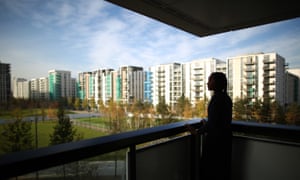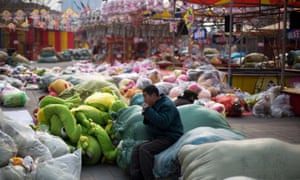Extract from The Guardian
In Tokyo, you can rent a cuddle. Loneliness is a
health issue in Manchester. And perhaps nobody is as isolated as a
migrant worker in Shenzhen. But can we really know what makes a city
lonely?
Are cities with lots of
renters like London the loneliest places to live? Photograph: Peter
Macdiarmid/Getty Images
Thursday 7 April 2016 17.00 AEST
“New York has a trip-hammer vitality which
drives you insane with restlessness, if you have no inner
stabiliser,” wrote Henry Miller after moving back to the city
following almost a decade in Paris. It could be expected that the
Brooklyn-born novelist would have been happy to return, yet something
didn’t sit right:
“In New York I have always felt lonely, the
loneliness of the caged animal, which brings on crime, sex, alcohol
and other madnesses.” Miller didn’t hurt for friends or charm –
he was married five times – but he saw himself as an outsider,
“forever and ever the ridiculous man, the lonely soul”, and it
was his hometown that brought on this fever of loneliness.
Could Miller’s words be evidence that New York –
where countless people have gone to find fame, work, love and even
themselves – is the loneliest city in the world? Or is it possible
that the person, not the place, was the source of Miller’s
discontent? And if so, what is the loneliest city?
Urban life is more
stressful than rural life, but whether it’s lonelier is a point
of debate among social scientists. A 2016
report by Age UK noted there are higher incidences of loneliness
in cities, but precisely what brings it on is surprising. The same
report found that gender and education are largely irrelevant –
except for those with the highest level of education, who are often
lonelier – and that household income and caring for a pet also have
little effect.
Isolation is one of the biggest problems faced by
Vancouver residents. Photograph: Ben Nelms/Reuters
What
matters is not whether we live alone, but whether we feel alone
Eric Klinenberg
So what impacts loneliness, and how does that play
out in cities? The size of a household inversely affects how you
feel: the smaller the household, the more lonely it tends to be. And
people who rent or own a home are lonelier than those with a
mortgage, perhaps because cities with lots of renters – such as
London, which is expected to have 60%
of residents renting by 2025 – have greater transience, and
potentially lower community engagement. New York, Los Angeles and San
Francisco have rental figures hovering
in the mid-50s. Renters dominate in German cities, too – a
long-term trend attributed to low rents and housing policies, but
one that may end up influencing neighbourhood engagement.
One thing is certain: the percentage of those who
live alone has increased dramatically. In the US, 27% of people live
alone, up from 5% in 1920, and in New York City it’s roughly one
third. The same trend is evident in Canada, and even more pronounced
in Europe – 58% of people in Stockholm live alone, a figure that is
considered
the highest in Europe. In many cities, the trend is here to stay.
The Australian Bureau of Statistics estimated that there will be 1.3m
more single-occupancy households by 2025, a
jump of roughly 60%, and one that could crowd major cities and
affect access to affordable housing.
Obscured by those figures, however, is the
assumption that living alone leads to loneliness – two things the
sociologist Eric Klinenberg, author of Going Solo, says are often
conflated. “In fact, there’s little evidence that the rise of
living alone is responsible for making us lonely,” he wrote
in 2012. “Research shows that it’s the quality, not the
quantity of social interactions that best predicts loneliness. What
matters is not whether we live alone, but whether we feel alone.”
The demographic that most reports feeling lonely
are older people, and they do often live alone. In Stockholm, 35% of
people over the age of 75 experienced loneliness, while in Bristol
10-15% reported the same. (Hence the slogan “Bristol:
a brilliant place to grow old.”) Older people are likely to be
more lonely in cities, especially if they are poorer, have physical
or mental health issues or live in underprivileged areas.
Campaign to End Loneliness suggested that 7% of
older people in the UK are lonely, while age researcher Thomas Scharf
found that
16% of older people in deprived neighbourhoods in English cities
were “severely lonely”. Manchester fared worse than Liverpool or
London, which may explain why it is treating loneliness as an urban
health issue: it created the Valuing Older People programme in 2003
to address, among other issues, loneliness and isolation. Similar
projects have sprung up in other cities which recognise that
loneliness runs tandem to issues such
as segregation, housing, healthcare, and isolation among seniors
and others vulnerable citizens.
The networks of migrant workers in China might
help to stifle isolation, but living and working conditions can be
difficult. Photograph: Andy Wong/AP
But it’s not only older people who suffer from
isolation. In Australia, city
dwellers have fewer friends than they did two decades ago. In the
US, a troubling one in five people said they had only one close
friend. Or consider idyllic-looking Vancouver, on the shores of the
Pacific Ocean, which struggles not only with affordability (it was
recently crowned the most
expensive city in North America), but also with friendliness.
We can
see other people living richer, more populated lives than our own. At
the same time, we can feel very exposed
Olivia Laing
The Vancouver Foundation thinktank asked community
leaders and charities to identify the biggest issues facing
Vancouverites and were told it
wasn’t homelessness or poverty; it was isolation. Of 4,000
people from 80-odd ethnic groups who were polled, one third of
respondents found it hard to make friends – something I discovered
firsthand when I spent a rainy, grey winter working in Vancouver,
wandering Stanley Park alone with my dog at weekends and sitting in
crowded cafes by myself. In this young, diverse city, the newly
arrived struggle most: among people who had been in Canada for five
years or less, almost half (42%) had just two close friends.
A dearth of friendship doesn’t afflict only
recent immigrants. Many Tokyoites long for friends so dearly that
they’re willing to hire them. American writer Chris Colin,
intrigued by Japanese “affection for hire” industries such as
cuddle
cafes and cat
rentals, spent time with a service that provides temporary
friends. The clientele was varied, he wrote: widowers, shy single
types, “that one dude who just wanted a friend who’d do him the
solid of waiting seven hours outside Nike to snag these fresh
sneakers for him when they went on sale”. The largest of the
rent-a-friend agencies, Client Partners, has
eight branches in Tokyo alone.
Japanese cat cafes have become popular with people
living in urban areas, as has the idea of ‘affection for hire’.
Photograph: Junko Kimura/Getty Images
Across the Sea of Japan, there’s a different
problem: large-scale migration. As rural Chinese move to big cities
such as Shanghai and Beijing, they encounter isolation on an epic
level. As of 2012, a staggering 230 million people had migrated from
the countryside to cities. (More than half the country’s
population now live in cities, up from one third in 1990.) Known as
the “floating population”, they can find themselves in
low-quality, high-density housing, subject to discrimination and at
risk of low social participation, especially if they move frequently.
Researchers
surveyed Chinese reports on community social networks,
neighbourhood attachments and marginality and determined that
migrants were more neighbourly – which may help them counteract
isolation – but faced discrimination and, in some cases, grim
living conditions: one corporation in the factory city Shenzhen
houses more than 200,000 employees in dormitories, which
there’s been an epidemic of suicides. The report noted: “The
‘neighbourhood’ for them is likely to be the factory.” Yet in
Beijing migrants had greater “neighbouring intensity” – in
other words, they’re better at connecting with their community –
suggesting that migrants may bring much-needed village values to the
lonely urban jungle.
If life in China’s megacities illustrates
anything, it might be that loneliness is often due to circumstance.
This wouldn’t surprise Olivia Laing whose new book, The Lonely
City, chronicles
a post-breakup stint in New York. “The thing
with cities is we are absolutely surrounded by people,” Laing
recently told the Globe and Mail. “We can see other people
living richer, more populated lives than our own. At the same time,
we can feel very exposed … there are lots of eyes on everyone. That
is why the loneliness of the city has a particularly distinct tang to
it.” Loneliness, however, is often like bad weather, “it passes
through our lives”.
So are people in Shanghai or Berlin more solitary
than those in Stockholm or Vancouver? I put the question to one of
the field’s leading researchers, the University of Chicago’s John
Cacioppo, who wrote the
book, Loneliness. His research disputes the idea that urban life
is inherently lonelier than rural life, and he declined to play
favourites and pick just one city. “You raise an interesting
question,” he says. “Unfortunately, we have no data with which to
address it.” Maybe Laing is right that urban loneliness is
ephemeral. Or perhaps we can learn from Henry Miller’s struggle
with New York; in 1944, he packed his bags and moved to sunny Big
Sur, California.
• This article was amended on 7 April 2016 to
correct the spelling of Thomas Scharf’s surname, and some details
relating to his research and the Valuing Older People programme.



No comments:
Post a Comment